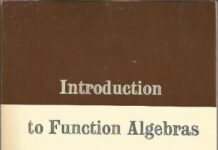
Ebook Info
- Published: 2011
- Number of pages: 354 pages
- Format: PDF
- File Size: 16.99 MB
- Authors: Andrew Browder
Description
1 Real Functions 2 Sequences and Series 3 Continuous Functions on Intervals 4 Differentiation 5 The Riemann Integral 6 Topology 7 Function Spaces 8 Differentiable Maps 9 Measures 10 Integration 11 Manifolds 12 Multilinear Algebra 13 Differential Forms 14 Integration on Manifolds
User’s Reviews
Reviews from Amazon users which were colected at the time this book was published on the website:
⭐This book is for serious students of mathematics. A certain amount of mathematical maturity is needed in order to, fully, appreciate this book. It is also necessary to work through the examples in order to derive the greatest value from this text. Having studied, mathematics, over various years, from texts by Hardy, Rudin, Royden etc., I feel that this book is a worthwhile addition to the armamentarium of a serious student who is interested in learning the tools of rigorous analysis.
⭐This book is concise and straightforward. It serves well as a reference when you’re trying to solve problems since it follows the definition, theorem, proof, proposition, lemma, example layout. However the block style writing of the proofs is hard to read.
⭐This is by no means an introductory text. This is a rather advanced book. This is more of a esconder or. even a third course in real analysis.
⭐I’ve read a few books on Real Analysis. Some attempt to cover too much, some don’t cover enough. This book seems to include all of the essential topics without going overboard. It is also very easy to navigate.
⭐Book came as described in very good condition, let me tell you, it’s a bit dense, though. I’m sure there are math textbooks that are easier to read than at least this paperback version of the textbook.
⭐I have used this book from time to time to clarify and improve my understanding of isolated topics, including the construction of the sigma-algebra associated to an outer measure, parametrizations of submanifolds in euclidean spaces, Jacobi’s change of variables Theorem, exterior derivative and Stokes formula…Here, I have always found clear reasoning, elegant writing and good additional material. Therefore I keep this book always by my side. It’s a jewel and an absolute bargain. It compares well to ( and complements nicely with) old one-volume cassics, like Dieudonné’s “Foundations”, Apostol’s “Analysis” (second ed), or Rudin’s “P. of M. A.” Its scope is wide, though it’s sometimes terse (there are few exercises, few hints and Fourier theory is only sketched). But in such a tiny volume you can not place everything. I think this book is balanced, coherent and refined. It offers old good dishes well cooked and beautifully presented. And it has few challengers, as far as I know. Let me recommend one: Laudenbach’s “Calcul différentiel et intégral” (in French).
⭐I taught a year analysis with this book. The book contains two semesters at least of undergraduate abstract analysis. The first half or so covers a first semester course with the usual things, metric spaces, continuity, sequences and series, and so forth. The second half or so has Lebesgue integration and multivariable analysis. I found it difficult to find another book having both semesters content in one volume, except for Rudin, which I chose not to use due to its price. So it fits a certain need. But I probably will not use this textbook again in my courses. I found the text to be way to concise, which might have been a result of the effort to fit so much into one volume. This is especially hard for the beginning half of the book, since the transition from calculus to abstract analysis tends to be conceptually challenging for students. Rudin is similar in some respect, since it is also concise. However personally I found it very natural to “fill in the blanks” in sketched proofs in Rudin, whereas in Browder I was more likely to develop a headache doing the same. Also I don’t like the problems in the text. There’s not really that many, and they tend to be multipart, too difficult and time consuming. The book could be improved by increasing the number of shorter exercises.
⭐Browder’s book is a great text for serious study of analysis at the beginning level. The coverage is similar to Rudin’s “Principles of MA”, and it is a worthy successor of it. It is a book for mathematicians, so don’t even dare to open it if you are looking for the usual ‘calculus for dummies’ course. Proofs are usually the most concise and elegant ones, being in the tradition of Rudin again. But the treatment of analysis on manifolds is more standard, just as the construction of Lebesgue measure and integration. Only drawbacks: sticking to real variable and omitting complex numbers on most subjects (even in power series!), and the ominous presence of the usual chapter on Riemann integral. You may buy Rudin or this, and you’ll be doing a great investment.
Keywords
Free Download Mathematical Analysis: An Introduction in PDF format
Mathematical Analysis: An Introduction PDF Free Download
Download Mathematical Analysis: An Introduction 2011 PDF Free
Mathematical Analysis: An Introduction 2011 PDF Free Download
Download Mathematical Analysis: An Introduction PDF
Free Download Ebook Mathematical Analysis: An Introduction
